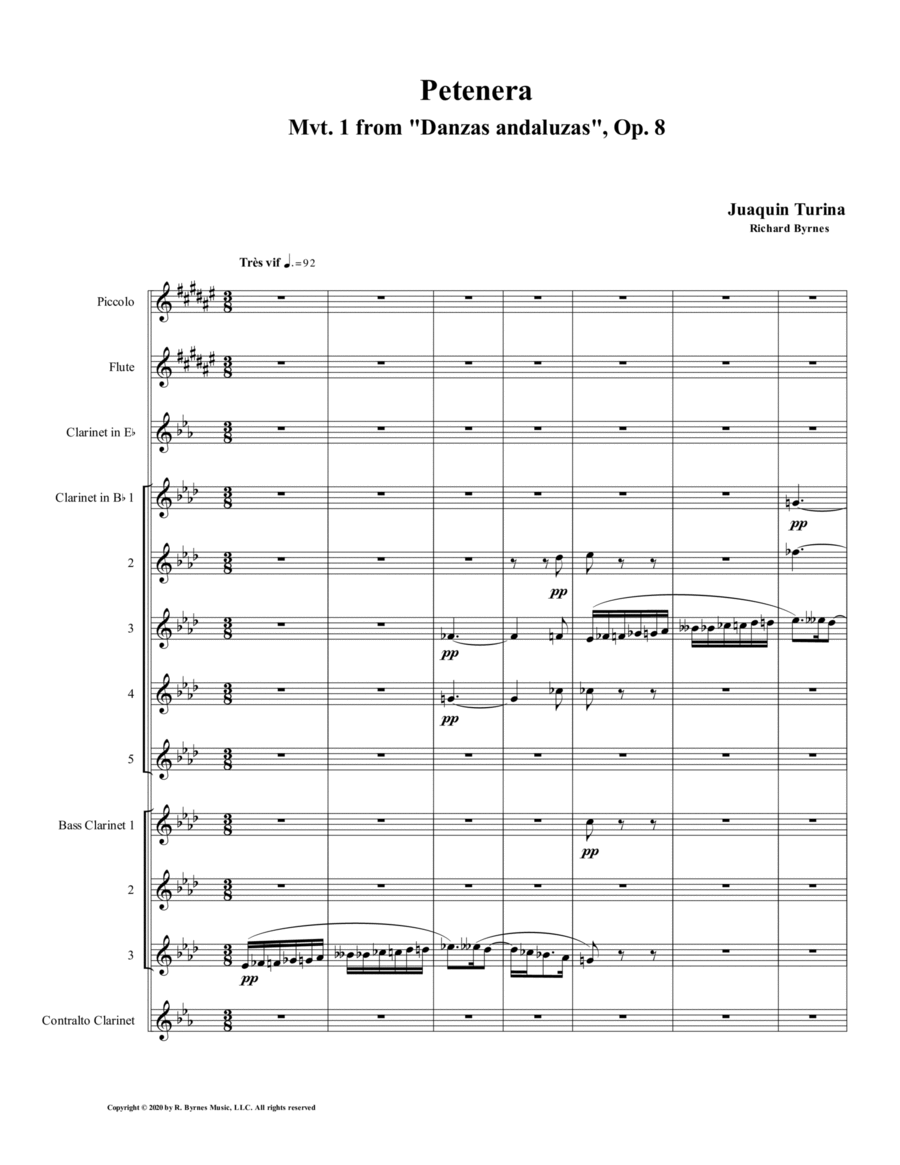Woodwind Ensemble Bass Clarinet,Contra Alto Clarinet,E-Flat Clarinet,Flute,Piccolo - Digital Download SKU: A0.830727 Composed by JuaquÃn Turina. Arranged by Richard Byrnes. 20th Century. 69 pages. Richard Byrnes #3517803. Published by Richard Byrnes (A0.830727).  JuaquÃn Turina, a Spanish composer, was contemporary with the impressionistic movement. He became acquainted with Claude Debussy and Maurice Ravel, and his harmonic palette reflects that influence. Petenera is a wonderful example of his music.  This arrangement is scored for: Piccolo, Flute, E-flat Clarinet, 5 B-flat Clarinets, 3 Bass Clarinets, & Contralto Clarinet.  Please peruse the pages and listen to the recording of the score that is offered to determine whether this arrangement can work for your ensemble.  In addition to works by Turina, we offer works by J.S. Bach, Brahms, Debussy, Dvorák, Fauré, Glazounov, Glinka, Gottschalk, Granados, Griffes, Lotti, Mendelssohn, Mozart, Ravel, Turina, & Vierne. Â
